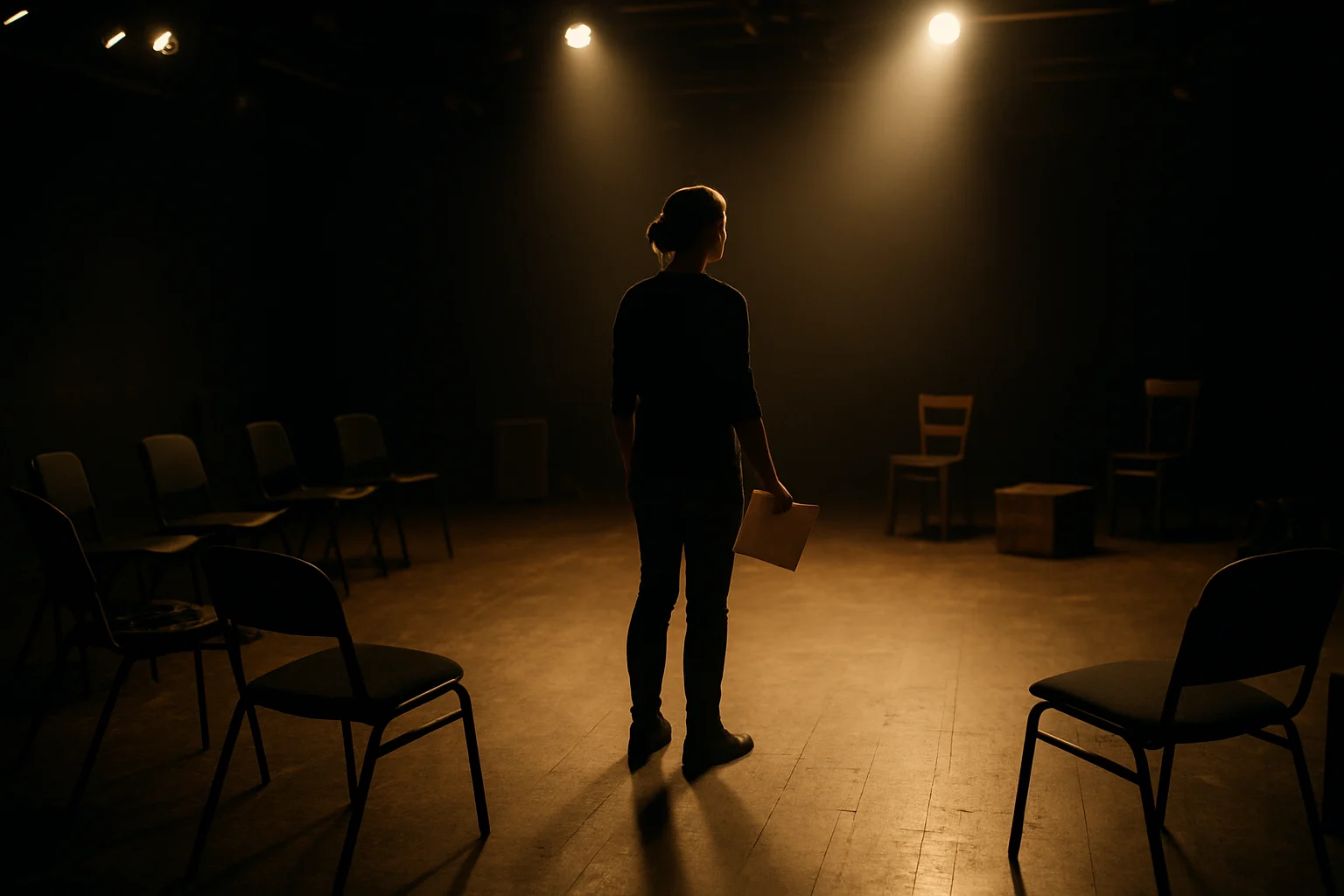
It was 8:53AM when the text came in.
“Where are the mic batteries?”
I was two hours away. Not calling the show. Not walking the halls. Not running the room, answering emails, etc. Just… out. The team knew I was off that day—planned, communicated, documented. The schedule had gone out, the notes were clear, and everything was labeled. But I still felt the phantom buzz of my walkie. I still flinched when I saw my name pop up in the group chat. It turns out, the hardest part of stepping away isn’t trusting your team. It’s trusting your systems.
The Leadership Test You Didn’t Plan
There’s something quietly unsettling about being absent from the thing you’re usually holding together. Whether it’s a day off, an illness, a different assignment, or you’re just stepping back to give someone else the reins, there’s always a pull. That whisper of, “What if something breaks?” or “What if I forgot something?”
And let’s be honest—we’re not exactly encouraged to take days off. In stage management, it can feel like a badge of honor to push through illness, to be the first one in and the last one out, to always be ready with an answer and a backup plan. The culture tells us we’re supposed to be there. Always. Alert, available, indispensable.
But sometimes… we’re not. And sometimes… it’s fine. The day goes smoothly. People show up. The changeovers happen. The crew checks in with each other. Someone else answers the question. The show runs.
When that happens, you don’t just feel proud—you feel a little unmoored. Because we’re so used to being necessary.
Here’s the truth no one tells you when you’re starting out:
If everything collapses when you’re not in the room, that’s not a compliment. That’s a red flag.
But it’s also an opportunity, a reminder that our responsibility isn’t to be the one holding everything together all the time—it’s to build the foundation so others can. The real work is creating systems that speak in our absence and building trust within the team so they know they’re capable, equipped, and supported. When we do that—intentionally, consistently—we’re not stepping away from the work. We’re stepping into a deeper kind of leadership.
The Difference Between Knowing and Leading
In our world, we face two kinds of challenges: technical and adaptive. It’s a distinction I wish I’d learned earlier, but nevertheless, it helps me reframe challenges and guides my leadership style.
Technical challenges are the ones with clear solutions. You learn them in a classroom, a handbook, or from someone passing down the process:
- Calling a cue
- Building a schedule
- Writing a daily report
- Resetting the deck
They’re necessary and teachable, and we’re often evaluated by how well we handle them. But they’re only one part of the job.
Adaptive challenges are messier. They’re about people, relationships, and navigating situations that don’t come with instructions. These are the things no one trains you for:
- Coaching someone through a panic attack backstage
- Addressing microaggressions in a dressing room
- Mediating a conflict between departments
- Responding to tears, burnout, or silence that doesn’t feel right
You don’t “solve” these. You adapt to them. You lead through them. And these moments are what define how people feel about working with you—even more than whether your paperwork was perfect.
What Systems Say in Your Absence
The first time I truly stepped away from a show, I braced for chaos. Not because I didn’t trust the team, but because I wasn’t sure I had given them enough. Enough information. Enough context. Enough space to lead without me.
But the show ran. Smoothly. And I realized: my absence hadn’t disrupted the system. It had tested it.
So now I ask myself different questions when I’m building a plan:
- Have I shared not just the what, but the why?
- Have I made it easy for others to act without needing my permission?
- Have I anticipated both technical and adaptive challenges?
- Have I created documentation that someone else could walk in and use?
Good systems don’t just live in your head. They live in clear, accessible places, and they empower others to step in confidently. That might look like:
- Labeling equipment like you won’t be there to point it out
- Sharing schedules that breathe—that people can actually use
- Explaining choices so your team understands the reasoning behind the plan
- Assigning responsibility, not just tasks
If you’re the only one who knows where the batteries are, the system isn’t finished.
The Room Still Hums
There’s something beautiful about stepping away and watching your team carry on—not because they don’t need you, but because you’ve given them what they need.
When we build systems that work in our absence, we’re not removing ourselves—we’re expanding our impact. It’s not about being irreplaceable. It’s about being intentional. About creating something sustainable, shareable, and human. The connections create and the relationships we build make all of the difference.
Leadership isn’t the ability to fix everything in real-time. It’s the ability to prepare people to respond with clarity when you’re not there. And the truth is, stepping out of the room gives us the clearest picture of how well we’ve done that.
So when you’re not in the room:
- Does your plan still hold up?
- Can people find what they need?
- Have you taught others how to navigate both logistics and emotions?
- Is your absence a disruption—or just a different rhythm?
We can’t always be in the room. And we shouldn’t have to be.
Because if we’ve done the work right—if we’ve invested in people, in process, in culture—then the room keeps moving. The values hold. The tone echoes. The structure supports.
The work speaks for itself.
And sometimes, it even sings.
📌 Looking to sharpen your systems? Subscribe to Half-Hour for weekly insights on backstage leadership, team dynamics, and building better production environments. Join here.



